Artificial intelligence covers many aspects of attempting to replicate human intelligence. A robot designed to act like a human is one example, but so is a model that predicts whether house prices will go up or down.
These examples show how wide the field really is. Right now, two AI approaches getting a lot of attention are deep learning and reinforcement learning.
Deep learning is built on artificial neural networks that learn from large datasets. By processing thousands or even millions of examples, these systems can automatically detect patterns and features. This enables them to recognize faces in photos, translate languages, and understand spoken commands well. These capabilities drive a lot of the AI solutions we interact with every day.
Meanwhile, reinforcement learning focuses on learning through interaction. An agent makes decisions, observes the results, and adjusts its strategy based on rewards or penalties. Over time, it improves its policy to maximize long-term success. This trial-and-error approach makes it great for tasks like training robots to walk or improving supply chains.
So, is reinforcement learning deep learning? The short answer is no.
Although both approaches are part of the same AI toolbox, they are built to solve different kinds of problems. In this article, we’ll explore deep learning vs reinforcement learning, discuss real-world examples, and highlight their impact. Let’s get started!
Deep learning can be compared to teaching a child to recognize objects by showing them many examples. Over time, the child learns to spot patterns, even in situations they have not seen before. In the same way, deep learning is a branch of AI that uses multi-layered neural networks to learn patterns and features directly from data automatically.
These neural networks are inspired by how the human brain works. They are built from layers of interconnected “neurons”, each passing information to the next. The more layers added, the deeper the network becomes, letting it capture complex relationships within the data.
What makes deep learning so impactful is its ability to learn and improve through examples. A common approach is supervised learning, where the system trains on labeled data. For instance, if it is given thousands of images tagged as ‘cat’ or ‘dog,’ it gradually learns to tell the difference and can apply that knowledge to new images.
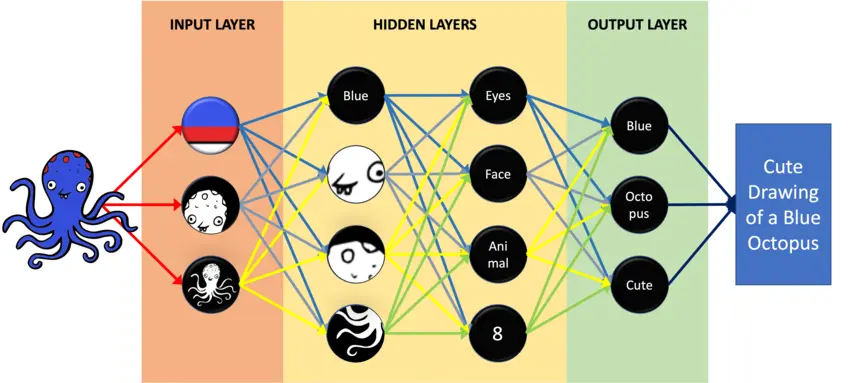
Understanding How a Neural Network Works (Source)
Deep learning comes in many forms, with different architectures suited for different kinds of data and tasks. Here are some key examples:
If deep learning is like studying from a textbook, reinforcement learning is more like learning to ride a bike. You can’t master it just by reading instructions. You need to try, fall, adjust, and try again. Over time, the lessons you learn from each attempt help you improve.
Reinforcement learning works in this same way. Instead of relying on massive datasets, reinforcement learning learns through interaction. The system, called an agent, takes an action, observes the result, and receives feedback in the form of rewards or penalties. With repeated practice, the agent discovers the best strategies for success.
One of the best-known success stories of reinforcement learning is AlphaGo, an AI system developed by DeepMind. It mastered the game of Go by playing millions of matches against itself and getting better with every move.
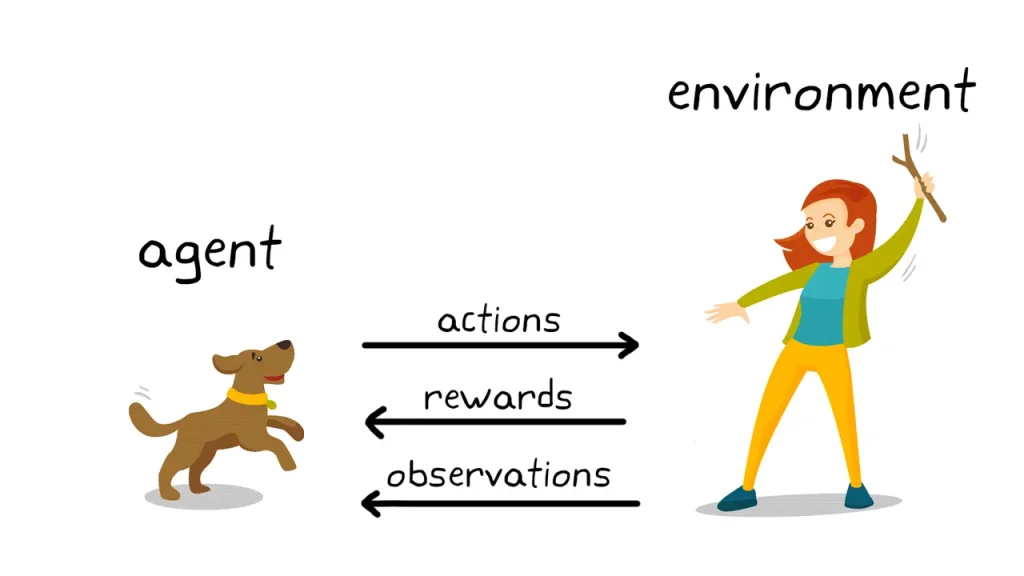
How Reinforcement Learning Works (Source)
Here are some examples of key reinforcement learning techniques:
People often compare deep learning vs reinforcement learning, and at first, they can sound similar. But they actually learn in different ways and are used for different kinds of problems. That’s why the question often comes up: Is reinforcement learning deep learning?
Reinforcement learning is best described as a learning paradigm. It focuses on how an agent learns by interacting with its environment, testing actions, and adjusting behavior based on rewards or penalties.
Deep learning, on the other hand, is an AI learning technique. It relies on neural networks to recognize and classify patterns in data. It doesn’t make decisions in an environment by itself, but it provides the perception and pattern recognition that many AI systems rely on.
Where things get interesting is at the intersection of the two, known as deep reinforcement learning. Here, deep neural networks and reinforcement learning are combined. The neural networks process high-dimensional inputs like images or sensor data, while reinforcement learning guides decision-making.
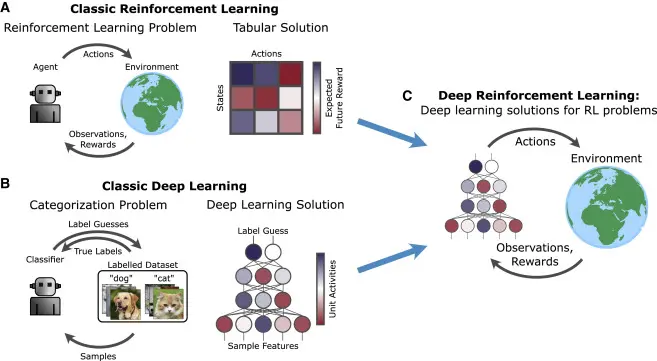
Is reinforcement learning deep learning? No, but the two can be combined to build more powerful AI systems. (Source)
A good example is robotics and autonomous systems. Imagine a robot trying to move around a room. Reinforcement learning helps it discover which actions lead to smoother movement, while convolutional neural networks process the robot’s visual input. Together, they let the robot understand its surroundings and make smarter choices in real time.
Deep learning and reinforcement learning are both part of AI, but they solve problems in very different ways. Check out the table below to compare them more clearly:
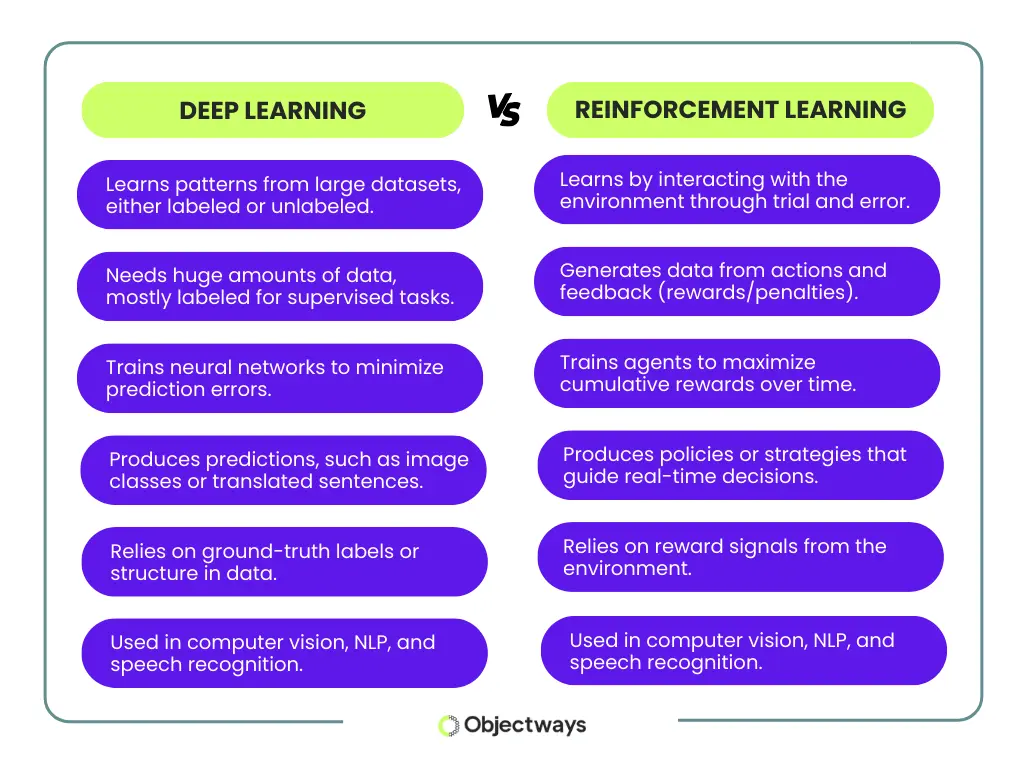
Deep Learning Vs Reinforcement Learning
Now that we have a better understanding of deep learning vs reinforcement learning, let’s take a closer look at how deep learning is applied in the real world.
Deep learning is changing medical imaging by making diagnoses faster and more accurate. Radiologists once relied solely on manual scans of X-rays, MRIs, or CT scans, a process that could be slow and prone to error.
Today, computer vision using convolutional neural networks can analyze these images at scale, identifying patterns associated with conditions such as tumors. This provides doctors with stronger support, enabling them to detect diseases earlier and enhance patient care.
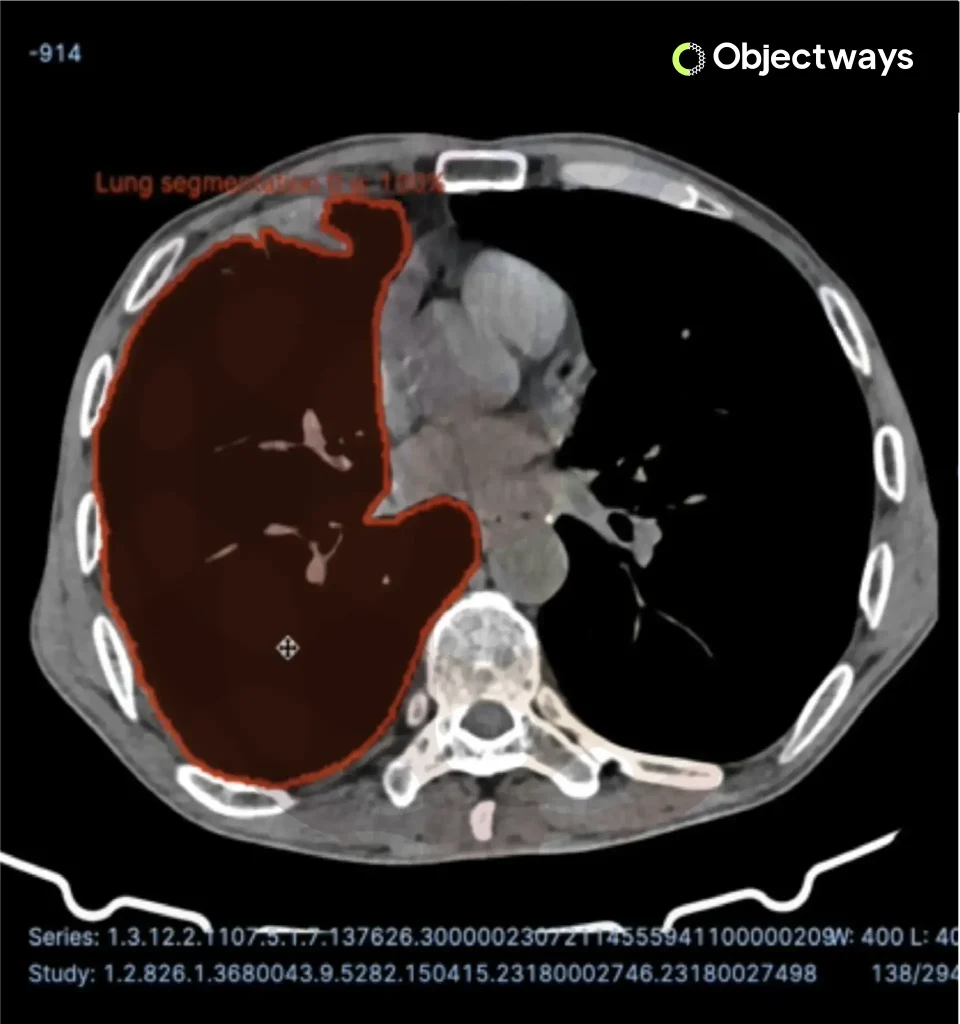
Brain Tumor Detection Based on Deep Learning (Source)
Self-driving cars are no longer just test projects; they are making headlines as more people try out robotaxis in everyday life. Waymo has rolled out 24/7 ride-hailing in parts of Silicon Valley and is expanding to cities like Nashville through a partnership with Lyft, while Amazon’s Zoox is running public robotaxi services in Las Vegas.
These developments show how autonomous vehicles are moving beyond pilot programs and into real-world use, with deep learning and reinforcement learning working together to help cars understand their surroundings, make decisions, and safely carry passengers without a human driver.
Another example of an area transformed by deep learning is natural language processing. Earlier systems relied on strict rules and often missed context because they treated each word separately.
Transformers, a type of deep learning architecture, changed this by using a mechanism called self-attention. This makes it possible for the model to weigh the importance of each word in relation to others, capturing meaning across full sentences and even paragraphs.
Thanks to this breakthrough, we now have chatbots that hold natural conversations, tools that can summarize long documents into clear takeaways, and translation services that capture tone and context rather than just swapping individual words.
Next, we’ll explore some real-world examples of reinforcement learning to see how systems learn by trying different actions, receiving feedback, and steadily improving their decisions.
In the past, AI in gaming often relied on fixed strategies that only worked in simple situations. Games like Go or Poker, with their vast number of possibilities, quickly showed the limits of that approach. Reinforcement learning introduced a new way forward.
Systems such as AlphaGo, which combined human gameplay data with self-play, and OpenAI Five, which trained through millions of self-played matches, improved their strategies over time. Both developed advanced tactics that eventually enabled them to defeat world champions in their respective games.
Consider a robot that can pick up objects of different shapes or move through an unfamiliar room. Traditional robots, which relied on fixed instructions, often struggled with these kinds of unpredictable situations.
Reinforcement learning gives robots the ability to adapt by practicing tasks repeatedly and adjusting based on feedback. Over time, this makes them more capable and reliable in real-world environments.

An Example of Using Reinforcement Learning in Robotics (Source)
Financial markets are always shifting, which makes rigid models quickly fall behind. Reinforcement learning treats investing as a series of decisions about when to buy, when to hold, and when to sell.
By running through countless simulated market conditions and learning from the outcomes, RL agents build strategies that can adjust as the environment changes. The result is smarter systems that balance risk and reward while aiming for steady, long-term gains.
Despite their successes, deep learning and reinforcement learning still come with challenges. Here are some of the main ones to keep in mind:
At Objectways, we help you overcome these challenges through our expert human-in-the-loop data annotation across image, text, audio, video, and LiDAR, fast and secure data collection tailored to your needs, and scalable infrastructure built for real-world deployment.
A recent trend in AI is combining different techniques to move beyond narrow applications. Generative AI models, deep learning, and reinforcement learning are being integrated to create systems that can simulate scenarios, learn from experience, and apply that knowledge in the real world.
The most visible progress is happening in robotics, healthcare, and autonomous systems. Robots are learning to handle unpredictable tasks by first training in simulated environments. Likewise, in healthcare, AI is helping doctors with adaptive treatment recommendations tailored to each patient. Also, self-driving cars are integrating perception, prediction, and decision-making to make driving safer.
As these methods improve, the focus will likely move from lab experiments to real-world use at scale. But as advanced as these techniques are, they still need to be backed by reliable data pipelines, efficient training, and strong infrastructure to work consistently outside controlled environments.
Gaining a better understanding of the differences between reinforcement learning and deep learning shows how the two complement each other. Deep learning focuses on recognizing and interpreting data, while reinforcement learning learns from actions and feedback. Together, they cover both perception and decision-making, making AI systems more complete and effective.
At Objectways, we help organizations bridge these approaches with clean AI datasets and structured training processes. Book a call with our experts to bring your AI vision to life!
